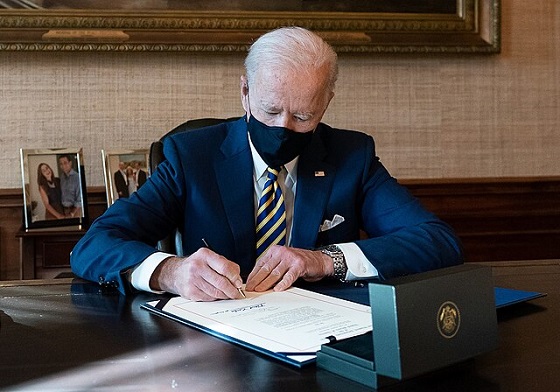Entertainment
Great Slate of Guests Coming to the Red Deer Home Show!

The Red Deer Home Show is back once again for 2019!
Over 280 vendors will be on hand to provide Central Albertans with new products and services, ideas and décor in Canada’s hottest economic region!
Be sure to also check out a few of this year’s excellent speakers and celebrities- they’ll be talking everything from gardening, to home organization to senior living!
Here are your 2019 speakers and when they’ll be taking the stage:
Donna Balzer- One of Western Canada’s Top Gardeners

Garden expert, regular guest on CBC radio in Alberta and host of internationally aired Bugs & Blooms on HGTV.
Donna brings garden inspiration and practical insider information to get you growing your own vegetables this season.
You will learn: The basics of garden design, selecting plants and choosing containers that are right for you plus the secret to growing pest-free food. Learn tips and tricks to grow great vegetables in 2019.
Saturday, March 16 at 2:30pm
Sunday, March 17 at 11:30am
Learn more about Donna here: www.donnabalzer.com
Chelsie Anderson- Garden Gratitude Throughout the Seasons

Regular CBC Radio “The Home Stretch” contributor, Chelsie understands gardens from a lifetime of hands-on experience. She has been the owner and operator of her gardening business “Garden SOIL-utions” for over a decade where she passionately tends to existing gardens and installs new ones with inspiration. In addition to her CBC appearances, Chelsie is frequently in the media; on CTV News, Global News, and gets many a mention in the Calgary Herald. She also sells red wiggler worms and their poop, known as castings, to gardeners who love the soil as much as she does. Beautiful plants start from the ground up!
Sunday, March 17 at 1:30pm
Learn more about Chelsie here: www.chelsiesgardens.com
Terry Hollman- Organizing Your Home

As President of the Red Deer based company, Canadian Closet, Terry knows a little bit about helping Central Albertans get organized and de-cluttered. When setting New Year’s resolutions, getting organized is in the top 10 and is often a repeated goal throughout the year. Terry will provide advice, solutions and visuals during this presentation to explain the best solutions for organizing areas in the home.
Attendees will be motivated to tackle closets, kitchens, pantries, garages, and more with practical, functional, and sensible ideas for keeping the home organized.
Saturday, March 16 at 11:30am
Carol Kelly- Healthy Yards

Healthy yards mean healthy for you as landowner, your community and local wildlife. This casual presentation will introduce you to Medicine River Wildlife Centre, learn how they can help you and how you can take simple steps to mitigate any conflicts or injuries concerning wildlife in your yard.
There will also be time to visit with Fang, the Centre’s education skunk, and ask any questions you may have.
Sunday, March 17 at 2:30pm
The BILD Team- Thinking about Buying a New Home or Renovating your home? Questions to ask before you hire your next contractor?

Need to hire a home builder to build your new home or a contractor for your next renovation project? Interviewed by Lisa Buckingham, from questions provided by the audience, Derek Fredeen, Andrew Wiebe and Kevin Wilkie will offer tips for selecting and working with a qualified professional before you start your search. This is a Q&A panel discussion so bring your questions, pens and paper.
Saturday, March 16 at 3:45 pm.
Audience members will receive a free home show admission ticket to return on Sunday. With information provided by the panel, we only thought it fair to give you the chance to return on Sunday armed and ready to ask more questions to the trades participating in the show. Sponsored by BILD – Central Alberta
Ellen Walker- How to Alleviate Stress and Make Your Home Work for You

Ellen will go through some steps in the interior design process so that your home reflects you, and how a professional Interior Designer can achieve your vision while reducing the stress on you.
Saturday, March 16 at 1:00pm
Sue West, Isabelle Setter and Karen Patzer- Senior Living By Design

Join Sue, Isabelle, and Karen, from Timberstone Mews, Christenson Developments, in a presentation and discussion on senior “Lifestyle Innovations & Resident-Centred Services”.
Friday, March 15 at 6:00pm
The 2019 Red Deer Home Show
Dates and Times:
Friday, March 15 – noon to 8:00pm
Saturday, March 16 – 10:00am – 6:00pm
Sunday, March 17 – 10:00am – 5:00pm
Business
California planning to double film tax credits amid industry decline

From The Center Square
By
California legislators have unveiled a bill to follow through with the governor’s plan of more than doubling the state’s film and TV production tax credits to $750 million.
The state’s own analysis warns it’s likely the refundable production credits generate only 20 to 50 cents of state revenue for every dollar the state spends, and the increase could stoke a “race to the bottom” among the 38 states that now have such programs.
Industry insiders say the state’s high production costs are to blame for much of the exodus, and experts say the cost of housing is responsible for a significant share of the higher costs.
The bill creates a special carve-out for shooting in Los Angeles, where productions would be able to claim refundable credits for 35% of the cost of production.
California Gov. Gavin Newsom announced his proposal last year and highlighted his goal of expanding the program at an industry event last week.
“California is the entertainment capital of the world – and we’re committed to ensuring we stay that way,” said Newsom. “Fashion and film go hand in hand, helping to express characters, capture eras in time and reflect cultural movements.”
With most states now offering production credits, economic analysis suggests these programs now produce state revenue well below the cost of the credits themselves.
“A recent study from the Los Angeles County Economic Development Corporation found that each $1 of Program 2.0 credit results in $1.07 in new state and local government revenue. This finding, however, is significantly overstated due to the study’s use of implausible assumptions,” wrote the state’s analysts in a 2023 report. “Most importantly, the study assumes that no productions receiving tax credits would have filmed here in the absence of the credit.”
“This is out of line with economic research discussed above which suggests tax credits influence location decisions of only a portion of recipients,” continued the state analysis. “Two studies that better reflect this research finding suggest that each $1 of film credit results in $0.20 to $0.50 of state revenues.”
“Parks and Recreation” stars Rob Lowe and Adam Scott recently shared on Lowe’s podcast how costs are so high their show likely would have been shot in Europe instead.
“It’s cheaper to bring 100 American people to Ireland than to walk across the lot at Fox past the sound stages and do it and do it there,” said Lowe.
“Do you think if we shot ‘Parks’ right now, we would be in Budapest?” asked Scott, who now stars in “Severance.”
“100%,” replied Lowe. “All those other places are offering 40% — forty percent — and then on top of that there’s other stuff that they do, and then that’s not even talking about the union stuff. That’s just tax economics of it all.”
“It’s criminal what California and LA have let happen. It’s criminal,” continued Lowe. “Everybody should be fired.”
According to the Public Policy Institute of California, housing is the single largest expense for California households.
“Across the income spectrum, 35–44% of household expenditures go to covering rent, mortgages, utilities and home maintenance,” wrote PPIC.
The cost of housing due to supply constraints now makes it nearly impossible for creatives to get their start in LA, said M. Nolan Gray, legislative director at housing regulatory reform organization California YIMBY.
“Hollywood depends on Los Angeles being the place where anybody can show up, take a big risk, and pursue their dreams, and that only works if you have a lot of affordable apartments,” said Gray to The Center Square. “We’ve built a Los Angeles where you have to be fabulously wealthy to have stable and decent housing, and as a result a lot of folks either are not coming, or those who are coming need to paid quite a bit higher to make it worth it, and it’s destroying one of California’s most important industries.”
“Anybody who arrived in Hollywood before the 2010s, their story is always, ‘Yeah, I showed up in LA, and I lived in a really, really dirt-cheap apartment with like $10 in my pocket.’ That just doesn’t exist anymore,” continued Gray. “Does the Walt Disney of 2025 not take the train from Kansas City to LA? Almost certainly not. If he goes anywhere, he goes to Atlanta.”
Business
Disney cancels series four years into development, as it moves away from DEI agenda

 MxM News
MxM News
Quick Hit:
Disney’s decision to cancel its planned ‘Tiana’ streaming series follows the entertainment giant’s move away from diversity, equity, and inclusion (DEI) policies. The company, once deeply committed to political activism, is now struggling to recover from years of financially disastrous content choices.
Key Details:
-
Disney announced the end of DEI-based management decisions and the winding down of its “Reimagining Tomorrow” initiative earlier this year.
-
The Hollywood Reporter revealed that the cancellation of ‘Tiana’ was part of Disney’s broader retreat from “original longform content for streaming.”
-
Analyst Ian Miller notes that Disney’s prior focus on political messaging rather than quality content led to repeated box office failures.
Diving Deeper:
Disney has spent the past several years prioritizing political activism over storytelling, leading to a sharp decline in the company’s financial performance and audience engagement. According to Ian Miller of OutKick, “Disney assumed that any content that represented ‘diverse’ audiences or featured ‘diverse’ characters would be successful.” That assumption, he argues, proved costly.
The decision to cancel ‘Tiana’ comes at a time when Disney is reeling from multiple box office disappointments, including the expected failure of ‘Snow White’ and the ongoing struggles of both Marvel and Lucasfilm properties. Miller highlights the alarming trend, stating, “Marvel’s ‘Captain America: Brave New World’ may actually lose money, with a disastrous $342 million worldwide gross through the first three and a half weeks.”
The ‘Tiana’ series was first announced in December 2020, a time when Disney was fully embracing its progressive agenda. The Hollywood Reporter noted that the show struggled to find its creative direction despite being in development for over four years. Miller suggests that, in the past, Disney would have continued with such a project regardless of its quality, out of fear of backlash from the left. “Under its prior operating mandate, Disney would have pushed forward anyway, believing that canceling a show based on a black character would be unacceptable to left-wing critics,” Miller writes.
However, the company’s recent shift suggests an overdue recognition that audiences ultimately demand quality over ideology. As Miller points out, “Parents want to take their kids to the movies, or give them family-friendly content to watch at home when they need a distraction. For decades, that meant Disney. Until the company prioritized targeting demographics instead of quality.”
While Disney appears to be learning from its missteps, the road to recovery will be long. As Miller emphasizes, the key to regaining audience trust isn’t to abandon diverse characters but to “get it right instead of doing it to check a box.”
-

 Business2 days ago
Business2 days agoStocks soar after Trump suspends tariffs
-

 COVID-192 days ago
COVID-192 days agoBiden Admin concealed report on earliest COVID cases from 2019
-

 Business2 days ago
Business2 days agoScott Bessent Says Trump’s Goal Was Always To Get Trading Partners To Table After Major Pause Announcement
-

 2025 Federal Election1 day ago
2025 Federal Election1 day agoResearchers Link China’s Intelligence and Elite Influence Arms to B.C. Government, Liberal Party, and Trudeau-Appointed Senator
-

 Business1 day ago
Business1 day agoTimeline: Panama Canal Politics, Policy, and Tensions
-

 COVID-191 day ago
COVID-191 day agoFauci, top COVID officials have criminal referral requests filed against them in 7 states
-

 2025 Federal Election2 days ago
2025 Federal Election2 days agoRCMP memo warns of Chinese interference on Canadian university campuses to affect election
-

 2025 Federal Election2 days ago
2025 Federal Election2 days agoThe status quo in Canadian politics isn’t sustainable for national unity







